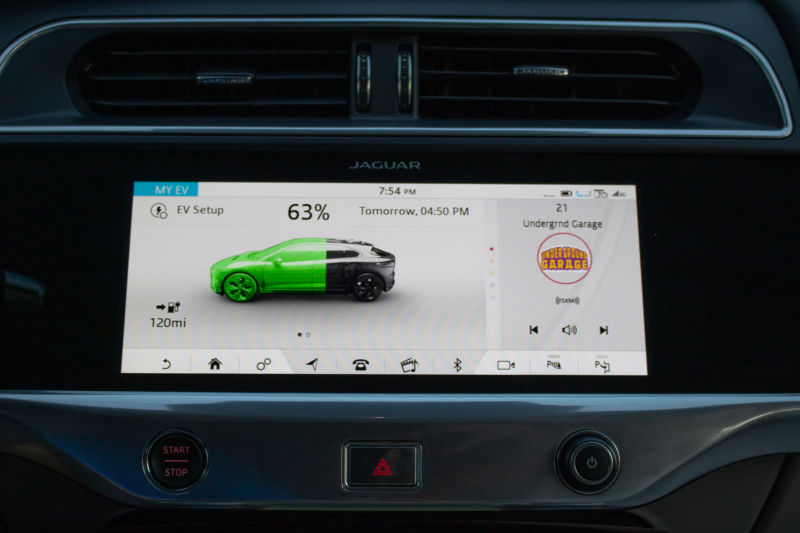Jaguar increases I-Pace range with update after one-make race series

Enlarge / Display in a 2019 Jaguar I-Pace displaying remaining battery charge level. (credit: Marlowe Bangeman)
If there's one thing I like writing about more than electric vehicles, it's the topic of how motorsport improves the cars that normal people drive. Sometimes that's an intangible thing, like the motivating esprit de corps that the pressure of racing can instill, but sometimes it's more concrete. The evolution of the Corvette through generations five to seven is an example of a race program that led to successively better and better road cars, but today I've got an example of a racing program that's actually bringing improvements to cars that already belong to their owners. On Monday, Jaguar revealed that it's applying stuff learned from the I-Pace eTrophy series to push out an update for the I-Pace battery electric vehicle that will boost range by up to 12 miles, among other improvements.
"The Jaguar I-Pace eTrophy has generated a huge amount of data for us to analyze and those marginal gains, derived from competition on the track, are now being applied to customers' cars to further enhance their driving experience," said Stephen Boulter, I-Pace Vehicle Engineering Manager. "The new software updates optimize the powertrain control systems to improve efficiency and allow I-Pace drivers to travel even further on a single charge without any hardware changes-it really is a case of the vehicle getting better with age."
What's changing?Jaguar says that the changes to the I-Pace include: tweaks to the way Eco mode sends energy (and therefore torque) to the front and rear motors for better range efficiency, better thermal management, and the ability of the battery pack to run to a lower state of charge (SoC) "without affecting drivability, durability or performance." (The battery is rated at a nominal capacity of 90kWh but until this update has only had a useable capacity of 84.7kWh.)
Read 4 remaining paragraphs | Comments